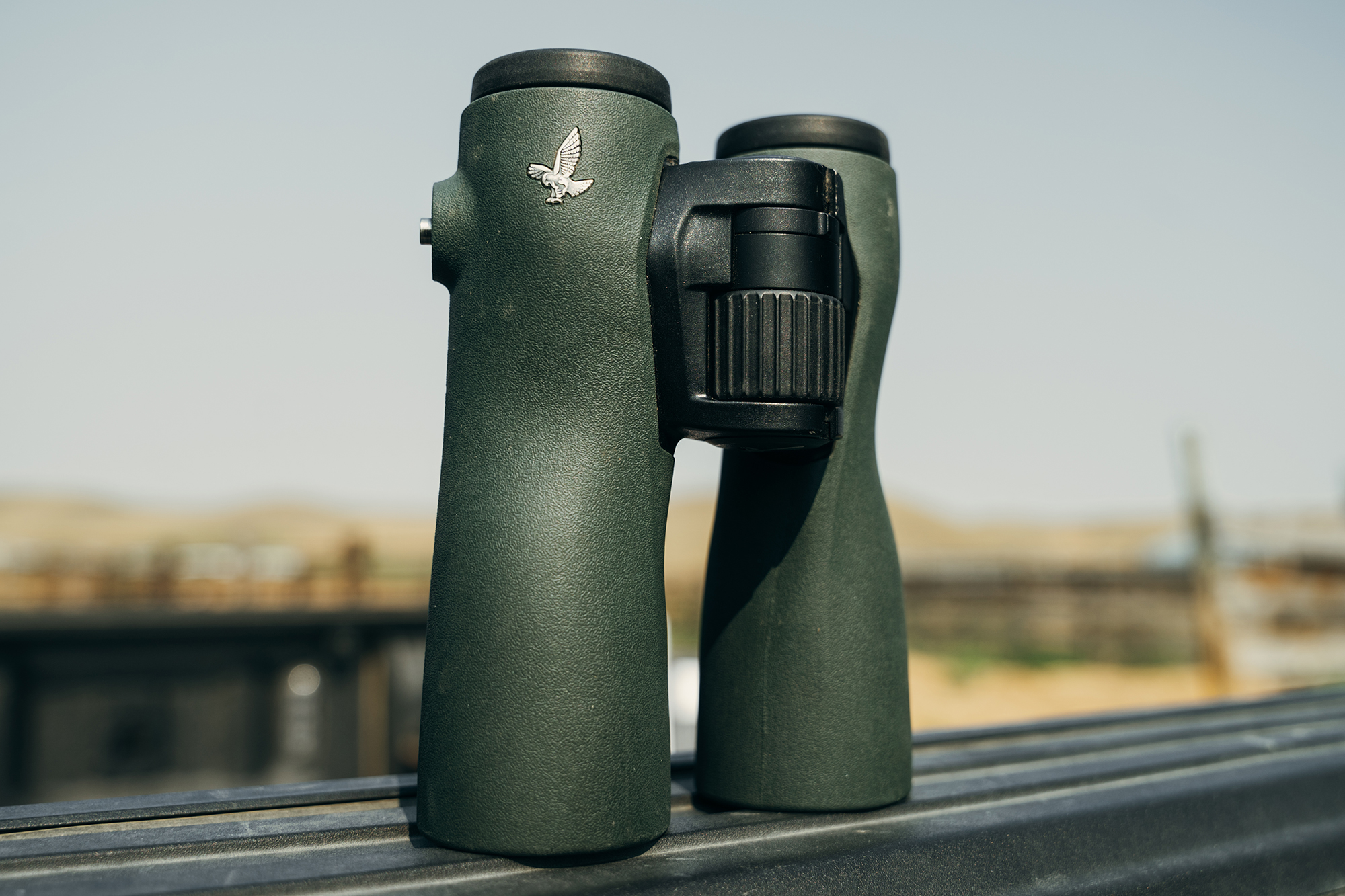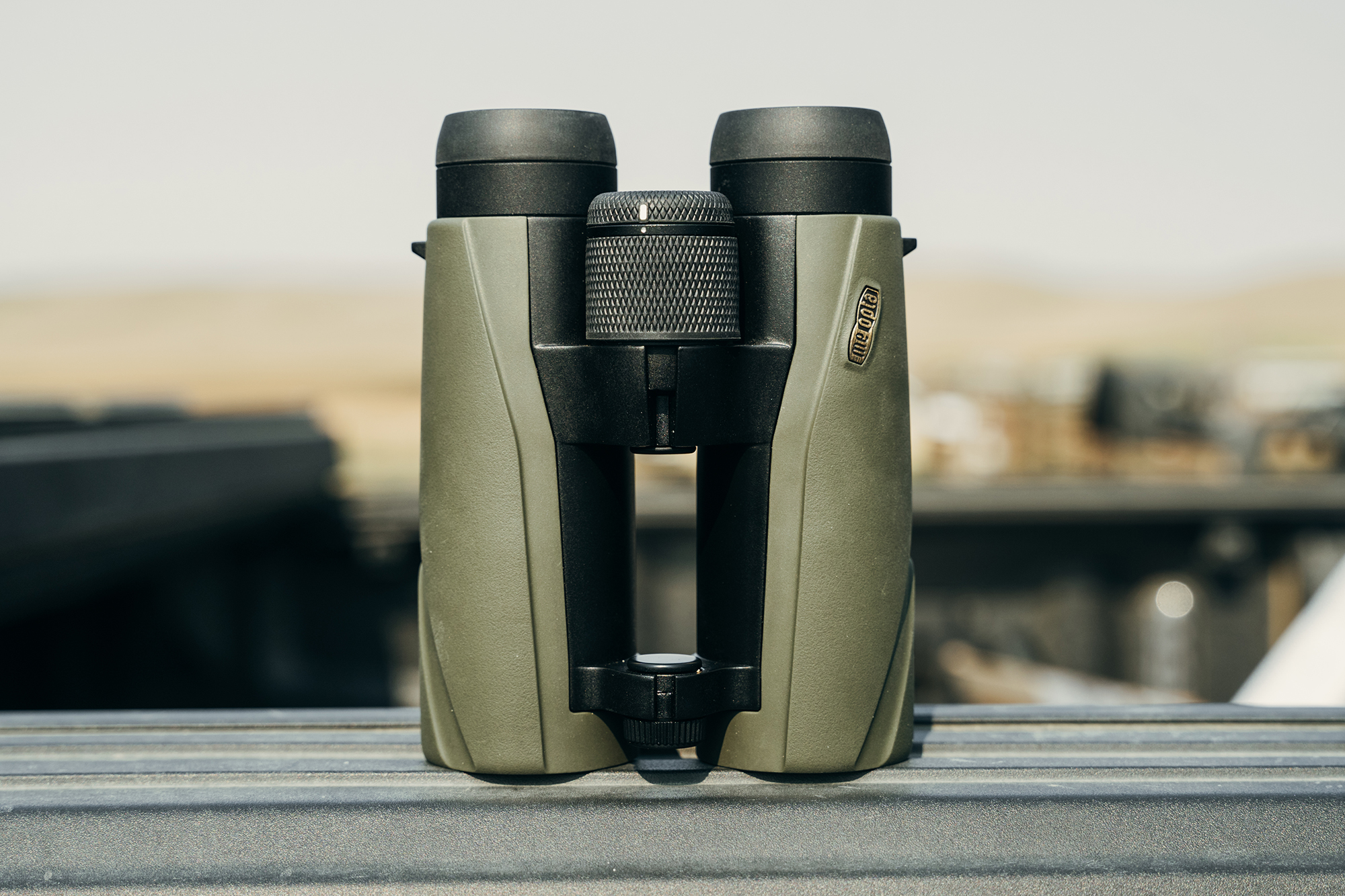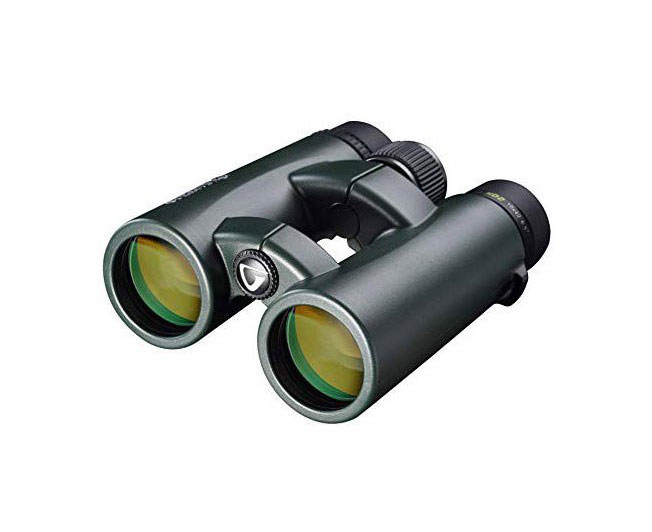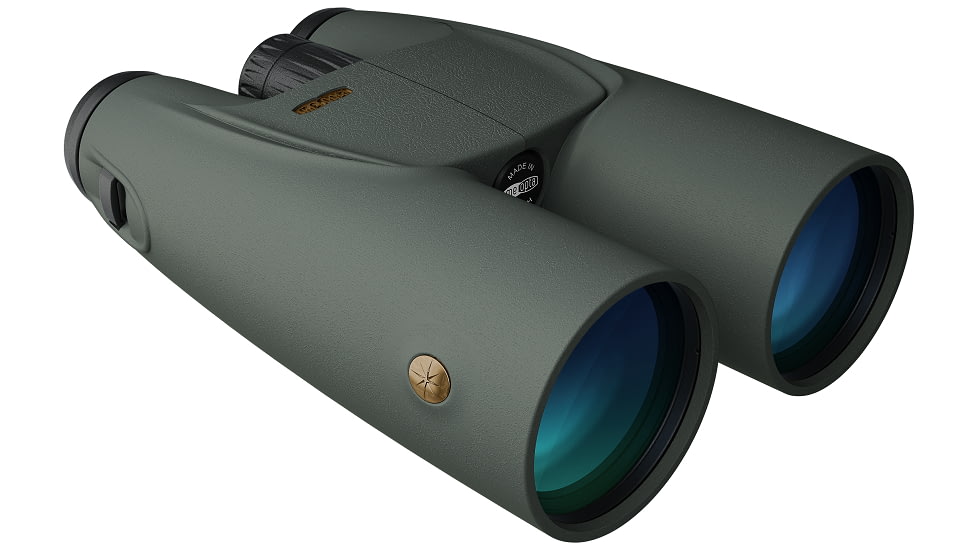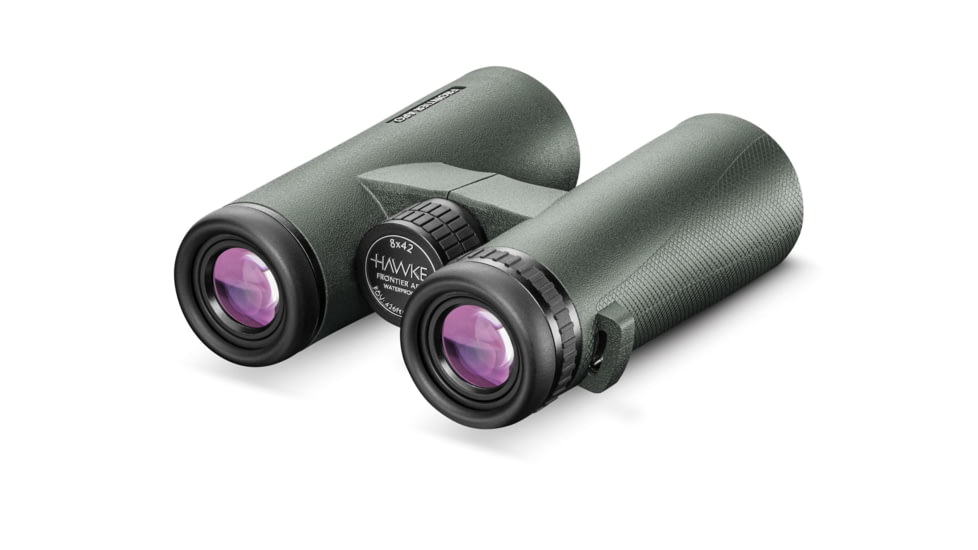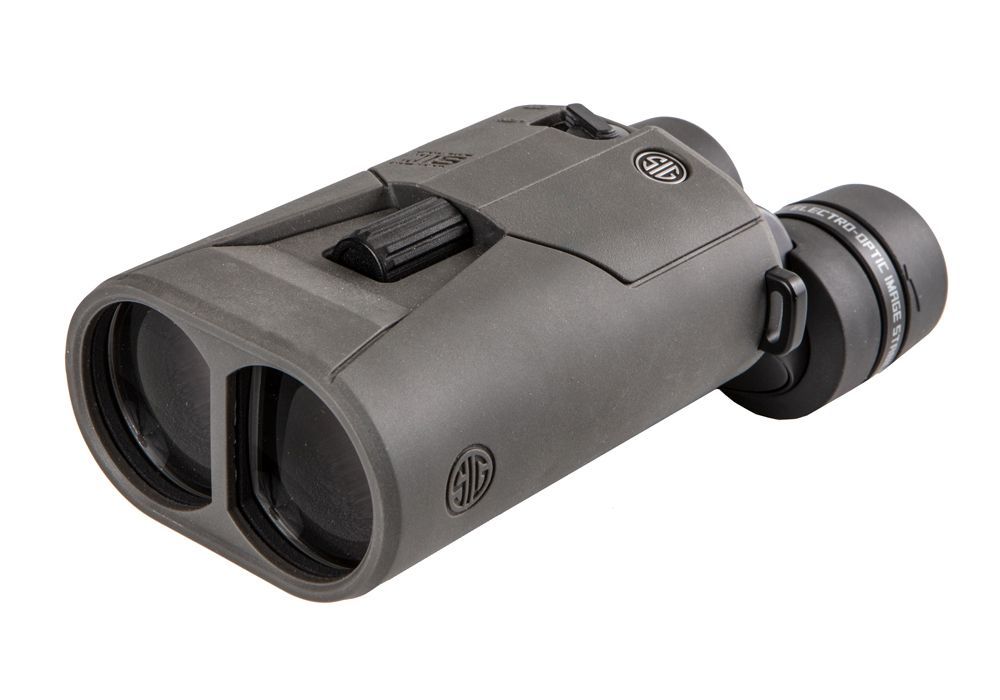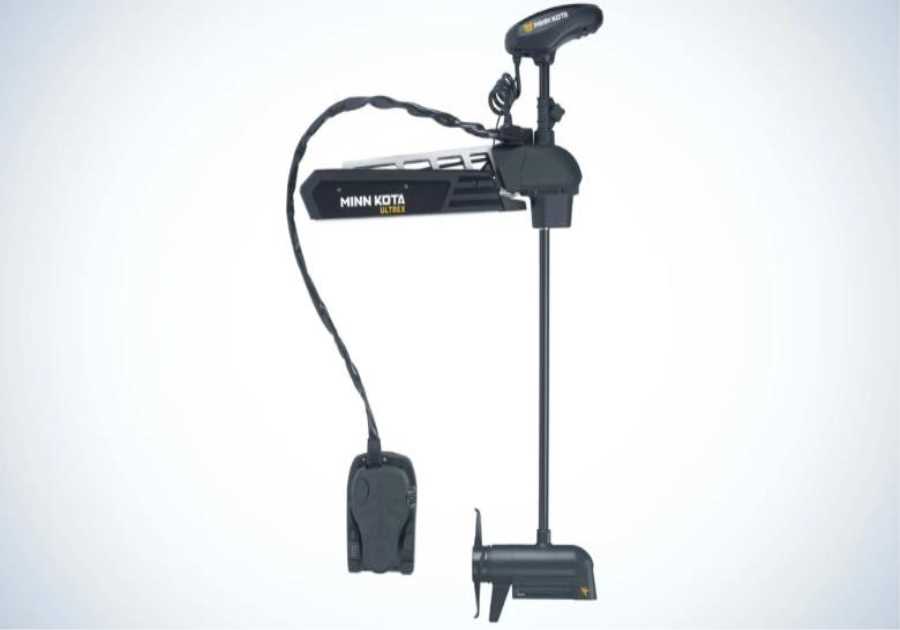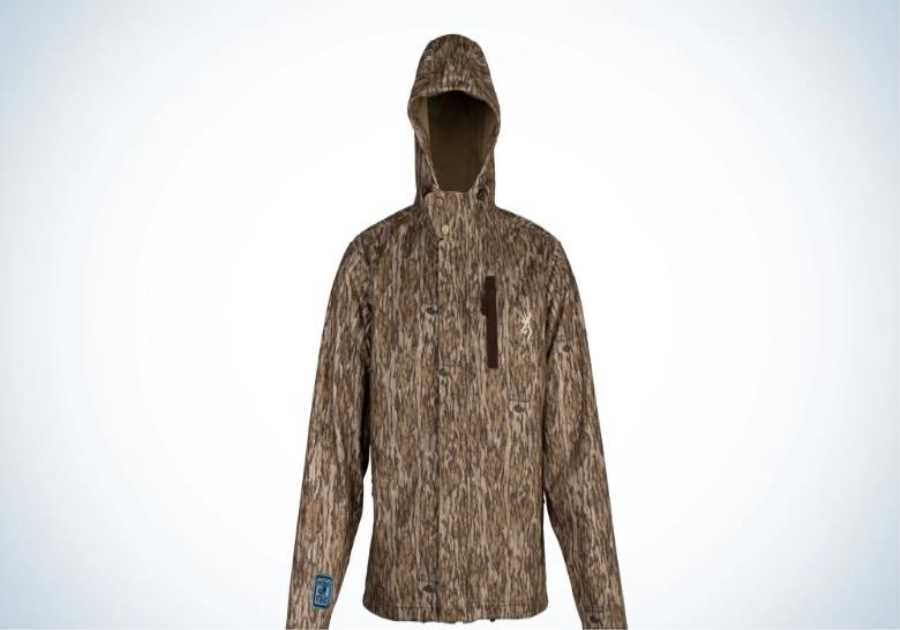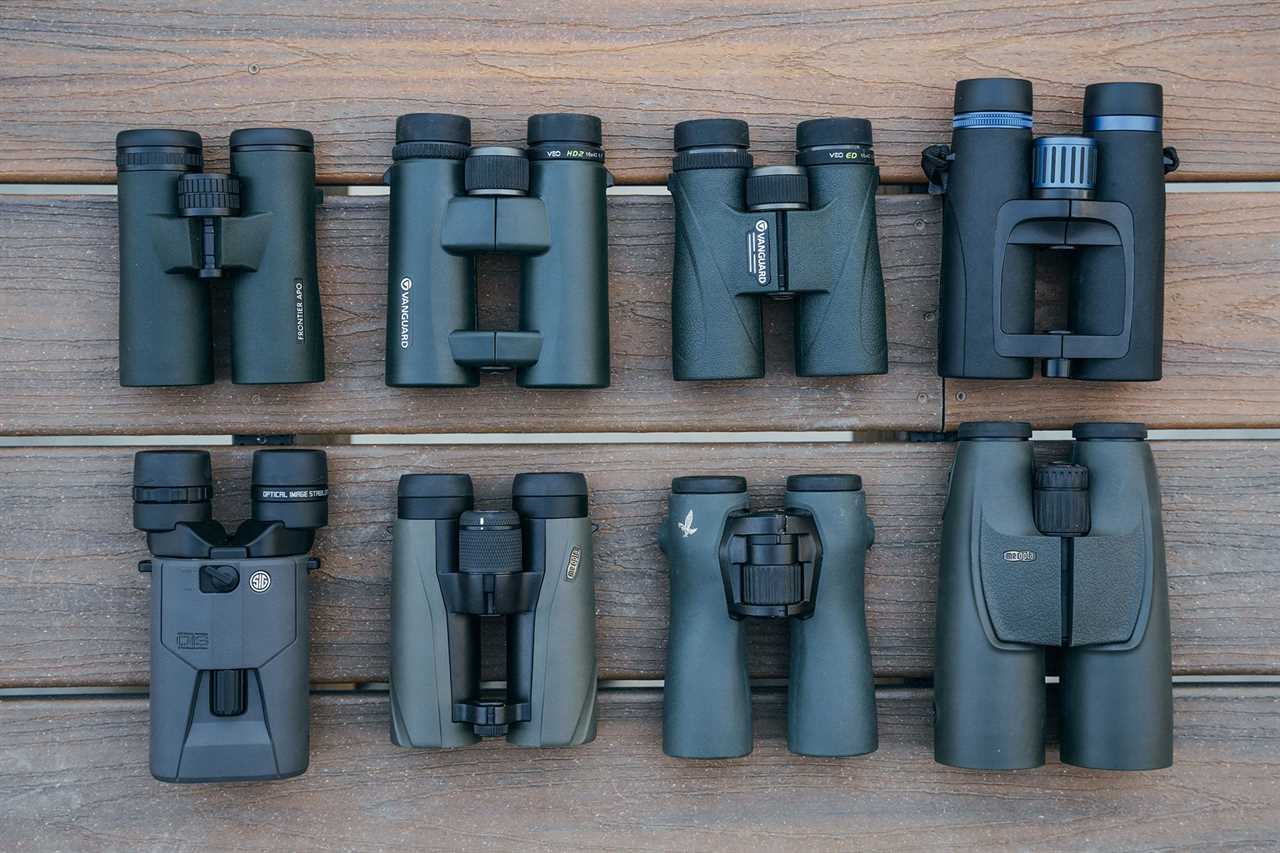
Pity the pedestrian hunting binocular introduced to the market by an upstart optics brand, one that has followed the lead of its competitors and procured product in Asia, stamped it with their logo and branding, and worked to place it on retail shelves and wholesalers’ websites.
It’s nearly impossible to differentiate oneself in that scenario, to break through all the noise of same-looking and same-performing binoculars to stand out. It’s hard enough for established brands to take market share with their new product lines, let alone these ambitious freshmen.
Part of the problem is the cloning of the industry, with many brands’ binoculars, spotting scopes, and riflescopes coming off the same production lines as those of their competitors. But the other side of the equation is that it’s hard to reinvent the basic binocular without investing in serious R&D, hiring optical engineers to re-examine the design, and purchasing high-end glass to boost optical horsepower.
Besides, the market for binoculars is fairly flat. While shooters might buy a new scope for every new rifle in their safe, once you have a serviceable binocular, it’s hard to buy up to the next level, especially since the improvements in performance are often incremental.
Several brands have addressed these problems by introducing variations on the standard roof-prism. SigSauer has an image stabilized 16×42 binocular in this year’s test, and Meopta has both redesigned and cut the price of its well-regarded MeoPro with the very nice Air. Swarovski went the high-investment, high-reward route with a brand-new product line, the excellent NL Pure.
Other units in this year’s test, from Hawke and Vanguard, are variations on product lines we’ve seen in previous tests. Only one upstart brand—Lucid—is present in the binocular mix this year. Lucid’s binocular has some merits, but it will have a hard time cutting through the noise to get noticed.
What Makes a Good Binocular?
Good binoculars are a marvel of practical technology. First, they must be highly portable and unimpeachably rugged. Second, they must be precise, capable of magnifying and clarifying distant objects. And third, they must be ergonomic, fitting your hands and face in a way that is pleasing and easy. We’ve all struggled with binoculars that were awkward to handle and caused eye fatigue and headaches.
How We Test the Best Binoculars
Our optics test is designed to assess all the things a capable binocular must do. We measure its optical resolution, scoring how well it can see extremely fine detail. Then we strap each binocular into a chest harness and take it to the field, measuring its ability to see a wide variety of targets, from up-close butterflies to distant birds and bucks, and in all light conditions.
We bring the whole field together over a series of evenings to determine which binoculars have the best low-light capability.
In our time with these binoculars—our field is limited to optics that are new for this year or which were introduced in the latter half of last year—we are constantly assessing their ergonomics. How do they fit our hands? How comfortable are the eyecups? How is the balance? How do the focus and diopter controls feel and perform?
By the time we are done with the test, we’ve spent many hours with each submission, living with them in the dust and harsh conditions of eastern Montana, banging them around in pickups and on 4-wheelers, and getting them grimy and wet.
The Editor’s Choice is awarded to the binocular with the highest overall score. Our Great Buy award goes to the binocular with the best combination of performance and affordability.
Best Binoculars 2021
Swarovski NL Pure 12×42 Editor’s Choice
We ran out of superlatives for this stunning binocular even before we were finished testing it. The final score was a bit anticlimactic, because the going-away consensus of the test team was that this was by far the best binoculars of this year’s field, and maybe the best binoculars we’ve ever tested.
The NL Pure is simply groundbreaking in both its optical performance and its design, and deserves to be added to the pantheon of world-class sports optics, joining Leica’s Noctivid and Ultravid lines and Zeiss’s Victory SF line in this rarified group.
Let’s start with the NL Pure’s exterior. Swarovski has slimmed down the barrels of the binocular to create a tapered hourglass-shaped waistline. That not only saves weight—our 12×42 tipped the scales at 1.8 pounds but seems even lighter—but it allows for a natural hand grip that finds the balance point of the open barrels instantly and makes one-hand operation a cinch. It also gives the NL Pure the graceful lines and aggressive contour that remind me of a Grand Prix racecar. Or the thorax of a wasp.
The open barrels allow users to lock in the binocular, reducing shake. The “ergonometry” of the binocular enables us to stabilize our 12X sample in almost every condition, with no noticeable image vibration. Try that with 12-powers in a conventional design.
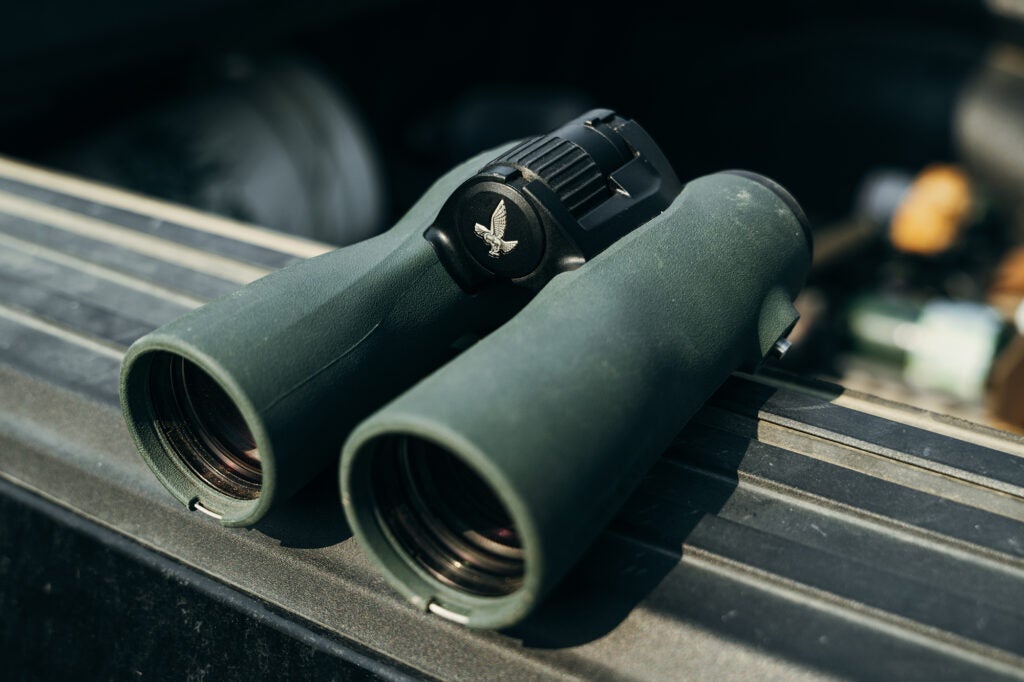
The design also allows for a class-leading field of view. Our sample has a 339-foot field of view at 1,000 yards, about what you’d expect for a 10-power binocular. The Swarovski binocular finished second in our low-light test to the mammoth and light-hungry 8×56 Meopta. The NL Pure posted the highest optical resolution score of the field.
The oversized focus wheel turns smoothly and with precision, and racks from close focus of about 8 feet out to infinity in a little over two tasty revolutions. The diopter, adjusted with a little tab just aft of the focus wheel on the center bridge, is similarly precise. The five-position eyecups extend with satisfyingly positive clicks.
The image delivered by the NL Pure is stunning. Thanks to field-flattening lenses in the eyepiece, you get a plate-glass window look on the world, with none of the convex distortion you see in some binoculars when panning landscapes. Colors are vivid, and we detected no peripheral distortion. The product line is also available in 8×32, 10×32, 8×42, and 10×42, but for the power and stability of our test sample, it’s hard to argue against the 12-power.
All this performance comes at a cost, of course. The NL Pure is a pricey number – our 12×42 version costs $3,099. But for an heirloom-quality optic that makes a strong case for being the clearest, lightest, and loveliest binocular in the world, the price is on par with Swarovski’s performance. MSRP: $3,099
Meopta MeoPro Air 10×42 Great Buy Winner
While it shares its name with Meopta’s excellent MeoPro binocular, the new MeoPro Air is different in some significant ways. For starters, the dual-hinge, open-bridge design of the MeoPro Air is modern, strong, and extremely useful, either for locking in the optic with a tight, fingers-over-barrel grip or one-hand use. The focus wheel is precise while being easy to turn, and the texturing provides wonderful fingertip traction, even in wet or cold conditions. The diopter, located just aft of the focus wheel on the center bridge, stays put after adjusting for each user’s eyesight, but we’d like to see a locking mechanism on this dial, just for extra insurance.
The Air’s image was excellent, on par with what we’d expect from this optics company based in the Czech Republic. Edge-to-edge clarity was excellent, the image bright, and colors vibrant. We detected a bit of pin cushioning—the optical aberration that shows a bit of a “belly” when panning distant images—but it is minor and undetectable when viewing stationary objects. Our MeoPro Air sample features HD fluoride glass inside the magnesium body.
We also liked the Meopta’s magnetic lens cover stays as a simple but ingenious take on standard attachment points. The tight-fitting lens caps swing down when the binocular is deployed, but if you don’t want the caps wagging in the wind, you can simply remove them by pulling on their tethers. The strong magnets break free, and you can glass in the nude until you want to reattach the caps. Simply remate the magnets, snap the caps in place, and your lenses are protected. Simple and smart.
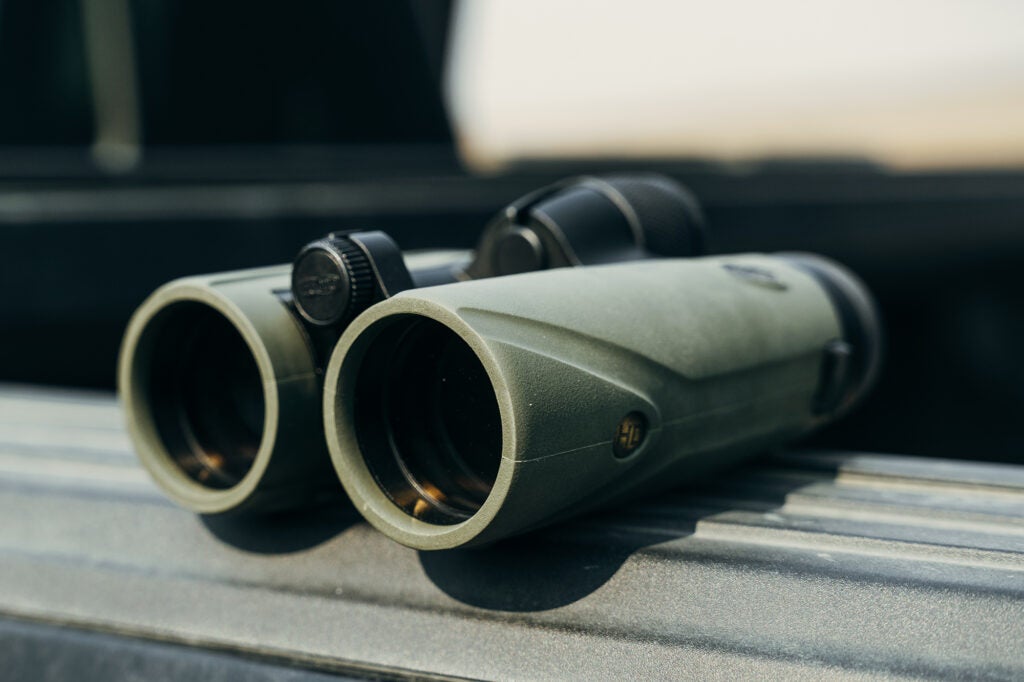
The three-position eyecups are responsive and very comfortable, and the balance and ergonomics of the Air make field operation a joy. Its padded nylon case is handsome and useful. The MeoPro Air is also available in 8×42.
We felt that the $999 price point for the 10×42 is fair, and that the MeoPro Air represents the best value in the category. We might want a slightly higher quality of glass, and just a couple of mechanical improvements, but testers felt that price is very fair for a durable, bright, and nimble binocular that should provide years of solid service. MSRP: $999
Vanguard VEO HD2/ED 10×42
Vanguard submitted two binoculars to this year’s test, but they were similar enough in performance, configuration, and price that we felt we should group them together for general discussion and then break them out into their constituent talents for closer inspection.
The two are the VEO HD2 and the VEO ED, the difference being the class of glass inside each, along with a few cosmetic differences. Both are adequate binoculars. They feature carbon-composite bodies, and you can feel a bit of lightness to the weight and the dubious durability, though we also noticed that the composite build dampens vibration more readily than chassis built with aluminum or magnesium. Both the Vanguards are 10x42s, and both feature similar textured focus wheels, right-barrel diopters, and zippered neoprene cases.
But if I had to choose the VEO that I felt had the best combination of durability and glass, I’d go with the ED version. The HD2 binocular, which features a closed-bridge design, feels especially light in hand and we detected more flaring, color fringing, and grainy image through this binocular.
The ED version, on the other hand, lasted a full 10 minutes longer in our low-light test, displays relatively little distortion, and has a hardier feel. Part of that may be due to the better ergonomics in the open-bridge design, but it’s also a higher quality bino in its details. The diopter ring, for instance, locks and the focus is slightly less spongy than that of its sibling. On the other hand, the finish of the ED version is slick and less pleasing than the pebbly armor of the VEO HD2. Vanguard makes a big deal that the armor for both models of the VEO is “premium Mitsubishi rubber.”
Both binoculars are priced at $399, though you will be able to find these on sale for at least $100 less than that. For a price-point binocular, they’re decent options and should provide adequate service as long as you don’t treat them too roughly. MSRP: $399
Meopta Meostar B1 Plus 8×56
Some testers pitched a fit at this handful of a binocular. The Meostar B1 is in an irregular configuration for American hunters—an 8×56—and for some members of my eastern Montana test team, it was just too exotic and, well, euro.
Then they looked through this 2-1/2-pound behemoth, and were wowed at both the clarity and brilliance of the image. And the capabilities of this odd configuration really showed in our low-light test. The Meostar B1 lasted late into the Montana evening, long after 42mm binoculars had called it a night. The Meopta even beat the world-beating Swarovski NL Pure on our low-light test, an outcome that shows why European hunters, who often hunt at night under a bright moon, swoon over this configuration. The 56mm objective lenses allow for marvelous light transmission, and the 8X magnification allows for a very wide field of view.
The Meostar B1 achieved its low-light performance with what Meopta calls its standard glass, which is also in the 8×32 and 8×42 versions, of the Meostar B1 Plus. But when you step up to the 10×42, 12×50, and 15×56 versions of the product line, you get a brighter, clearer extra-low dispersion glass. The image through that souped-up glass is even brighter and crisper than our version, and we’d expect the ED versions would add many more minutes to our low-light test sessions.
Elements that are common to all configurations of the Meostar B1 Plus are a locking diopter control that’s located just on the rear side of the focus wheel, a strong closed-bridge design, Meopta’s excellent MeoBright coatings, a handsome nylon carry case, and very tactile, almost sticky armor.
Our 8×56 version is such a handful that its performance is heightened when attached to a tripod. The threaded tripod mounting adapter is located on the forward side of the hinge, though it takes some dexterous fingers to unscrew the cover from under the bridge plate. Still, it’s a nice way to stabilize the optic, and a tripod allows users to maximize the talents of this light-gathering beast.
Sitting on a hill—or a German hochsitz (“high seat”)—gazing through the Meostar B1 at a distant line of trees as the sun sets and twilight gathers is a timeless and productive way to watch the world, and you’ll be surprised by the amount of game you’ll see at first and last light through such a light-hungry binocular as this. MSRP: $1,299
Hawke Frontier APO 8×42
What a cool little binocular this is. We were charmed by the small stature but big optical performance of this 8×42. The glass is fine, though not particularly noteworthy. It features extra-low-dispersion apochromatic lenses, which help make colors brighter and more vibrant. And it has some pretty standard configurations, from its single-hinge, open-barrel design, right-barrel diopter, and two-position eyecups.
So far so good. But the field of view delivered by this little binocular—a whopping 426 feet at 1,000 yards—makes the image look almost panoramic. And the unit is small. While the objective lenses are a full 42mm, it carries and deploys almost like a 32mm.
The ocular lenses—those are the ones you stick your eyes into—are very bright and relatively short, adding to the diminutive look of the Frontier APO. But it carries very nicely, and the 26-ounce (a little over 1-1/2 pounds) weight is nicely balanced. The Hawke ships with a premium nylon case and carry strap.
The textured armor is easy to grip and the focus wheel turns with precision, though it must be said all the controls—the hinge, focus, and diopter—took some working to smooth out and loosen their movements.
In all, this is a solid binocular that would be at home in a wide variety of scenarios, from a whitetail hunter’s treestand to an elk-hunter’s chest harness, or from a birdwatcher’s lanyard to a windowsill at your cabin. We felt the price was right for the combination of durability, field-worthiness, class of glass, and ergonomics the Hawke Frontier APO delivers. MSRP: $699
SIGSauer ZULU6 16×42
SigSauer has built its identity on the convergence of electronics and optics, and this interesting and very effective image-stabilized binocular is a great expression of that brand promise.
It should be noted that this isn’t the first time we’ve seen an image-stabilized optic in our test. Vixen Optics submitted a 10X a few years ago with a very similar configuration, and Canon has a whole family of stabilized optics, no doubt borrowing technology from the company’s celebrated line of image-stabilized camera lenses.
In fact, the SigSauer ZULU6 works much like one of those camera lenses. It contains a 2-axis gimbal that compensates for shakes both up and down and side to side. What that means in this particular configuration—a 16×42—is that the whopping magnification is tamed when the stabilization motor is on, allowing users to hand-hold this powerful binocular for extended glassing sessions.
When the stabilization is turned off, you get a harsh reminder of the worst part of 16-power, the hand shaking and vibration of the highly magnified image which jumps around like a caffeinated cat. A number of testers first viewed through the ZULU6 with the motor off, and complained about the shaky image. They then switched the gimbal on and were wowed by the optical performance of this neat little 20-ounce bino.
When the stabilization is on, this optic fills a vacant niche between that of a standard binocular and a compact spotting scope—an important consideration for backcountry hunters who are watching every ounce. We hope readers will take this unit for hard hunts, but we also fret about the durability of the ZULU. It feels plasticky, and the eyecups that distend from the body look like they could snap right off.
We should note that we had no durability issues with this design, built on a polymer frame and employing a special Schmidt-Pechan prism to bend light through that dog-leg optical path. But we also treated the Sig with kid gloves to ensure that we didn’t break anything.
The ZULU6 is also available in a 10-power, but we think the 16-power version is the way to go. It gives you all sorts of optical reach that you really can’t get with a standard binocular. Just keep the AA battery fresh and the stabilization on any time you can’t anchor the binocular on a tripod or top of a stout fencepost. MSRP: $699
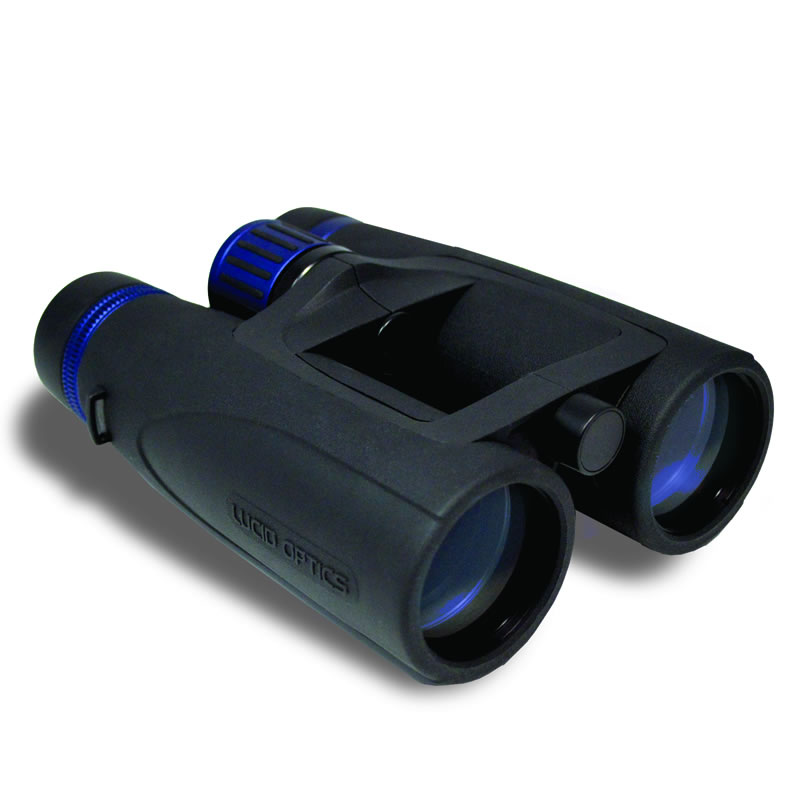
Lucid B-8 8×42
Lucid B-8 8×42
Talk about good first impressions. This binocular arrives in a hard-sided case cushioned with foam and the package also includes a premium neoprene carry strap. Lucid, a relatively new brand to the optics space, does a nice job of lifting expectations that the 8×42 B-8 binocular is a worthy inhabitant of such plush and protective accommodations.
Unfortunately, that’s not entirely the case. The B-8 is a serviceable binocular. It performed just ahead of the middle of the pack in our low-light test, and turned in decent image-quality and construction scores. However, it disappointed on resolution testing—our empirical measurement of the crispness of the image—and on durability ratings. Optically, we noted some peripheral distortion and color flaring in full daylight conditions, though in twilight conditions, its colors were among the best in the test, evidence of good lens coatings.
The Lucid’s build is impressive. It features high-definition extra-low-dispersion glass, and the twin-hinge open-bridge design is one of the most modern and comfortable on the market. The two-position eyecups are positive, and the thumb detents on the belly of the tubes do a nice job of grabbing users’ thumbs for a lock-solid hold.
The Lucid is light for a 42mm bino—weighing just 24 ounces—and testers questioned the durability of the aluminum-reinforced polymer frame. One tester said he heard and felt what seemed like sand grinding in the focus wheel; all testers described the focus as mushy and imprecise. The other side of weight, though, is portability, and testers reported carrying the Lucid for days of field work and marveling at its nimbleness and near weightlessness. We also like its tripod-mounting adapter located on the forward side of the front hinge.
In all, this is a solid freshman effort. The accessories are a very nice touch. Once the focus is tacked up, we think the Lucid will be a good value for the price. MSRP: $680 www.lucidoptics.com
The post The Best New Hunting Binoculars of 2021, Tested and Reviewed appeared first on Outdoor Life.
-------------------------------------
By: Alex Robinson
Title: The Best New Hunting Binoculars of 2021, Tested and Reviewed
Sourced From: www.outdoorlife.com/gear/best-new-binoculars-review/
Published Date: Mon, 02 Aug 2021 21:20:00 +0000
Did you miss our previous article...
https://playeverysport.com/recreational-sports/3-goto-practice-strategies-that-will-make-you-a-better-bow-shot-this-elk-season
.png)
